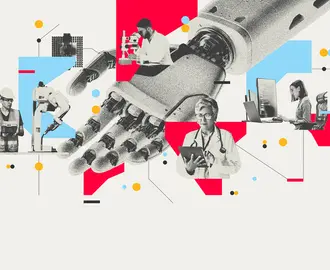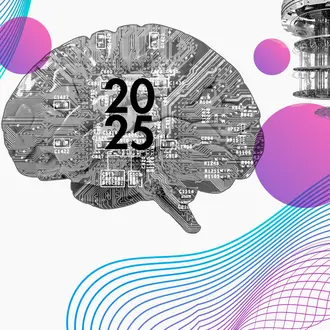Credit: ThomasShanahan / iStock
When do teams outperform individuals? Despite the universal importance of this question, researchers have long struggled to pin down a clear response.
But new work by MIT Sloan assistant professor helps find concrete answers by demonstrating that simple tasks are best accomplished by individuals, while complex ones are more efficiently completed by a group.
“For tasks that were simple, we found that individuals were more efficient than teams,” Almaatouq said. (Efficiency was defined by the relationship between how long it took to complete a task and how good the result was.) “When the task was more complex it went the other way, with teams more efficient than individuals.”
The findings emerge from Almaatouq’s background in computational science, “where there is a very clear language for defining the complexity of any task we ask a computer to perform,” he said. “This has not been the case with human tasks.”
For their study, Almaatouq and three colleagues — MIT Sloan PhD student Mohammed Alsobay, Ming Yin of Purdue, and Duncan Watts of the University of Pennsylvania — identified a class of tasks where they could vary complexity in a nice, systematic, principled way without changing anything else, rather than simply giving the participants different kinds of tasks, as most previous studies have done.
Specifically, they ran an experiment in which participants — both individuals and groups — were given a real-world problem of assigning students to dorm rooms. In these, several students need to be assigned to several rooms. Each student gets different value from different rooms (Amy prefers an east facing room), and certain constraints exist (Amy cannot share a room with Mo, say). The researchers systematically varied the difficulty of these tasks by changing the number of students, rooms and the nature of constraints.
The researchers found that being part of a team comes with fixed costs — work must be coordinated across several people, for example, and it often takes a long time for teams to reach consensus about which idea is best. “All of these dynamics are costs that don’t exist for individuals,” Almaatouq said. At the same time, certain benefits are inherent in teamwork, such as the ability to divide and conquer tasks, work in parallel to solve problems more quickly, or explore a broader set of options. As tasks get more complex, these assets become more beneficial. “With high-complexity work, eventually the benefits surpass the fixed costs, and that’s when teams really shine,” Almaatouq said.
These findings present two practical takeaways:
When allocating work, consider task complexity — and what success looks like
When managers want to find a workable solution to a problem in the least amount of time, they should ask a group to solve the problem when it’s complex and an individual to solve it when it’s simple. Almaatouq notes that he and his colleagues did find exceptions to this rule. For instance, when there were no time constraints on solving the problem, the best individuals performed as well as teams even when the problem was complex; so a very proficient individual could effectively tackle a complex task that has no deadline. But this requires knowing precisely who is best at solving the problem under discussion, as teams still performed better than the average individual.
Related Articles
Mitigate the fixed costs of teamwork, if possible
Given the researchers’ finding that teams take a long time reaching consensus and committing to a solution, it may make sense to assign a single leader to manage this step.
Similarly, though teams tend to explore a greater diversity of solutions than individuals, they also tend to select the best solution less often. Almaatouq suggested a form of “version control” to help manage this concern: Intermediate solutions should always be logged along the way so that teams, at any time, can revert to and build from older ideas.
A remaining question: When is a task complex enough to merit teamwork?
The mysterious threshold at which something becomes complex enough to merit teamwork remains unclear. Almaatouq is working on it, starting with studying how tasks vary.
“We’re developing a language to describe tasks in general — a language that so far has identified 42 dimensions along which they can differ,” he said. These dimensions include complexity, as well as things like the degree to which there is more than one correct solution to a problem, or the ratio of mental to physical requirements for any given task. In theory, any kind of task could be measured along each dimension, and then different tasks could be compared to determine their degree of similarity.
“This would allow us to classify tasks in the real world, understand how they relate to each other, and, eventually, allow people to determine the most efficient work arrangements for solving those tasks,” he said.
Read next: The 3 leadership types in a nimble organization



